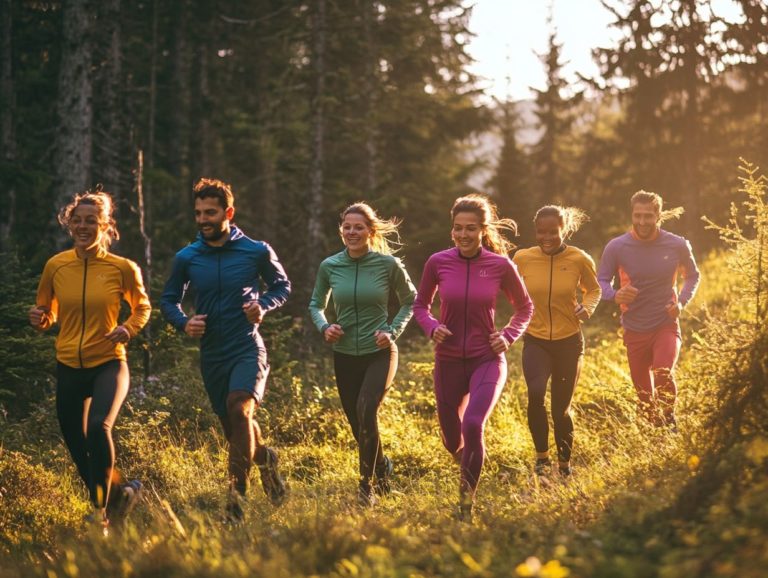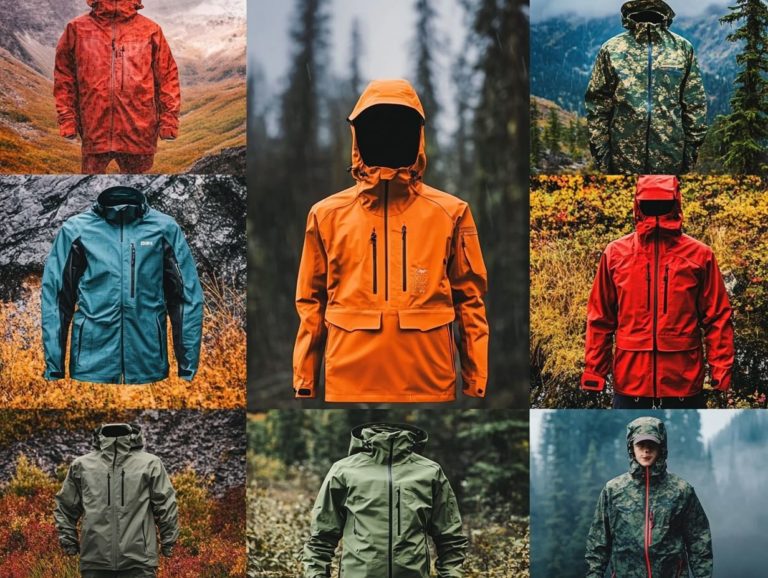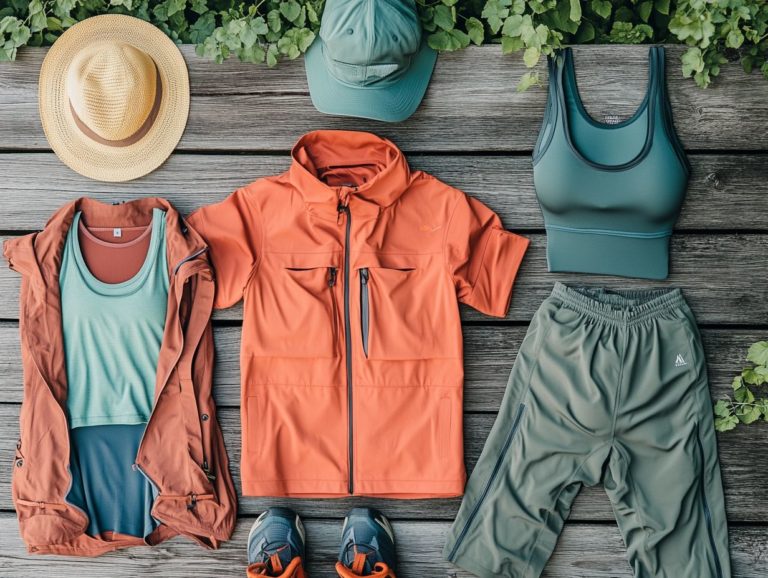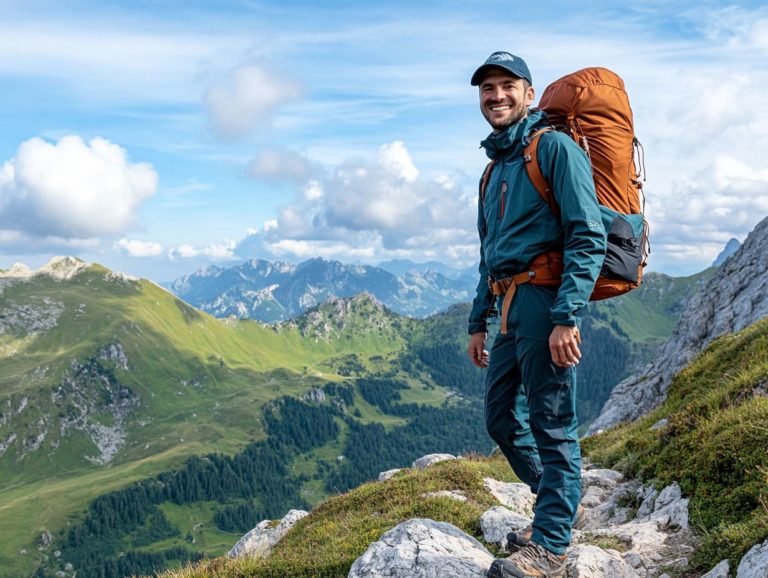The Role of Breathable Fabrics in Outdoor Gear
Breathable fabrics, such as bamboo and Merino wool, are a game changer for outdoor enthusiasts. They provide comfort, protection, and allow your skin to breathe.
This exploration reveals what makes a fabric breathable and the benefits it offers for outdoor gear. It enhances performance and shields you from the elements.
You’ll also find tips on maintaining breathable clothing for longevity. Whether you’re hiking or diving into water sports, understanding breathable fabrics can greatly improve your experience!
Contents
- Key Takeaways:
- Understanding Breathable Fabrics
- Benefits of Breathable Fabrics in Outdoor Gear
- Types of Breathable Fabrics
- Choosing the Right Breathable Fabric for Your Needs
- Maintaining and Caring for Breathable Fabrics
- Frequently Asked Questions
- What is the role of breathable fabrics in outdoor gear?
- What makes breathable fabrics different from regular fabrics?
- Why is breathability important in outdoor gear?
- What are some examples of breathable fabrics used in outdoor gear?
- Can breathable fabrics also be waterproof?
- Are there any downsides to using breathable fabrics in outdoor gear?
Key Takeaways:
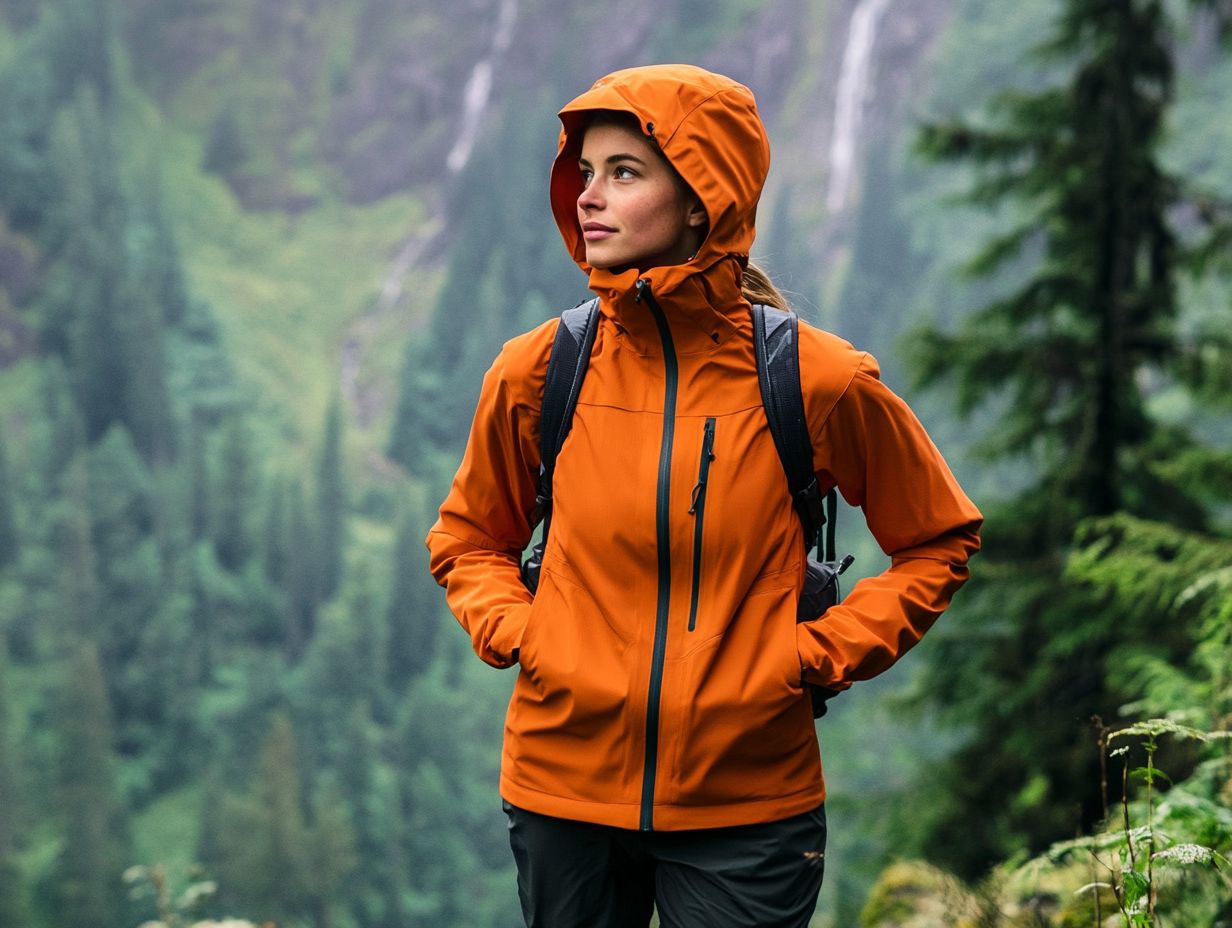
- Breathable fabrics improve comfort and performance by allowing heat and moisture to escape, keeping you cool and dry during activities.
- These fabrics block wind and water while letting moisture evaporate from inside.
- When choosing breathable fabric, consider your activity, environment, and the fabric’s durability and waterproofing capabilities.
Understanding Breathable Fabrics
Understanding breathable fabrics is essential for outdoor activities. These materials enhance comfort and performance by allowing air through and wicking moisture away.
Selecting the right breathable clothing can greatly affect your experience. Fabrics like Gore-Tex and Merino wool use advanced technology to ensure thermal comfort while letting sweat evaporate.
What Makes a Fabric Breathable?
Breathability is about how well a material allows moisture vapor to escape. This is crucial for comfort during physical activity.
It relies on various principles, one being the difference in vapor pressure inside and outside the fabric. When you sweat, moisture vapor seeks an exit, which hydrophilic coatings help facilitate. These are special treatments that help pull moisture away from your skin.
Breathable membranes let vapor pass while blocking liquid water. This creates an ideal environment for both cooling and insulation, enhancing your comfort in warm weather or high humidity.
Benefits of Breathable Fabrics in Outdoor Gear
Breathable fabrics offer more than comfort; they are vital for performance, moisture wicking, and quick drying. They let you fully enjoy outdoor activities without discomfort.
From down jackets to fleece, breathable clothing adapts to various conditions, whether battling humidity or cold. Mastering layering with breathable materials improves your thermal comfort during physical exertion.
Improved Comfort and Performance
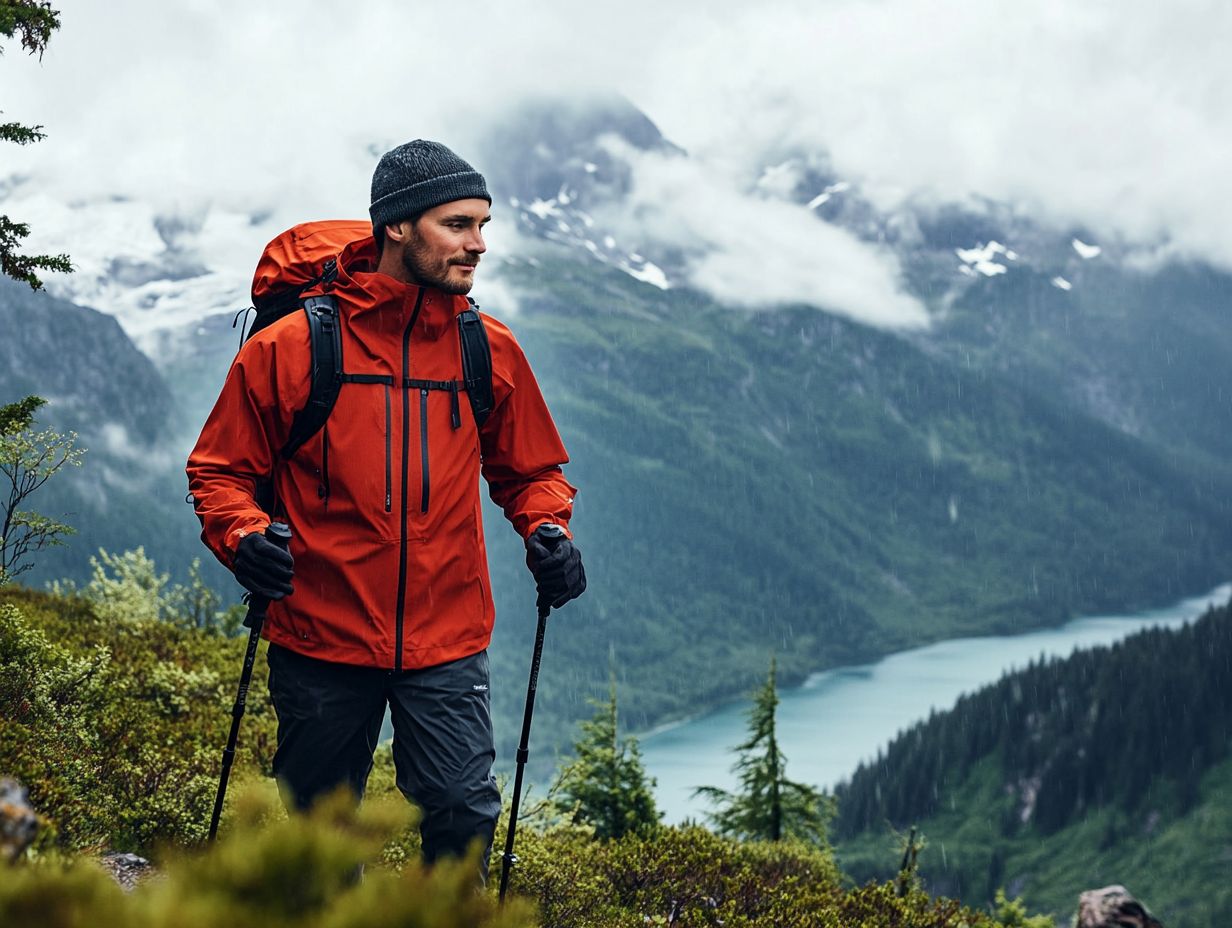
Improved comfort and performance through breathable clothing are essential for anyone engaging in outdoor activities.
Breathable fabrics play a vital role in regulating body temperature, ensuring that moisture is efficiently wicked away from your skin. This helps maintain a comfortable environment, especially important during physical exertion. Whether you re hiking in the summer heat or participating in winter sports, where layering is key, these materials make a difference.
These materials let sweat evaporate, keeping you cool and focused. Ultimately, choosing the right breathable clothing can take your outdoor adventures to the next level, promoting endurance and enjoyment in every season.
Protection from the Elements
Breathable fabrics offer you vital protection from the elements, allowing you to fully immerse yourself in your outdoor pursuits, from beach days to hiking, without the anxiety of unpredictable weather.
These fabrics play a crucial role in the design of waterproof jackets and trousers. These jackets use technologies like Durable Water Repellent (DWR), which makes water bead and roll off the fabric. This significantly boosts overall water resistance.
Integrated breathable membranes in these garments create a barrier that keeps water out while allowing sweat to escape. This dual functionality ensures your comfort, keeping you dry from both external moisture and internal sweat.
Ultimately, these protective features are tailored to meet your diverse outdoor needs, enabling you to tackle any adventure with confidence.
Types of Breathable Fabrics
The range of fabric types in breathable clothing encompasses everything from natural materials like bamboo and Merino wool to synthetic options such as nylon and polyester. Each fabric brings its own unique benefits and is specifically suited for various outdoor activities.
Grasping these distinctions is crucial when selecting the ideal fabric for your particular endeavors or climate. Recent technology improvements have brought us breathable membranes like ePTFE and PU membranes, significantly improving moisture management and comfort across diverse environmental conditions.
Comparison of Different Materials
A comparison of various materials on the market reveals that products like Gore-Tex and eVent membranes provide outstanding waterproof capabilities while still allowing for breathability.
As you explore the world of outdoor fabrics, alternatives such as Polartec NeoShell and Patagonia H2No also stand out as impressive options. Polartec NeoShell is celebrated for its exceptional breathability, efficiently allowing moisture vapor to escape while ensuring water beads off its surface, making it a top choice for active wear.
On the other hand, Patagonia H2No strikes a balance between waterproofing and durability, making it particularly well-suited for rugged terrains. Both fabrics utilize special designs that enhance their functionality. Outdoor enthusiasts like you have a wealth of robust choices tailored to specific activities, whether you’re hiking in wet conditions or engaging in strenuous pursuits.
Choosing the Right Breathable Fabric for Your Needs
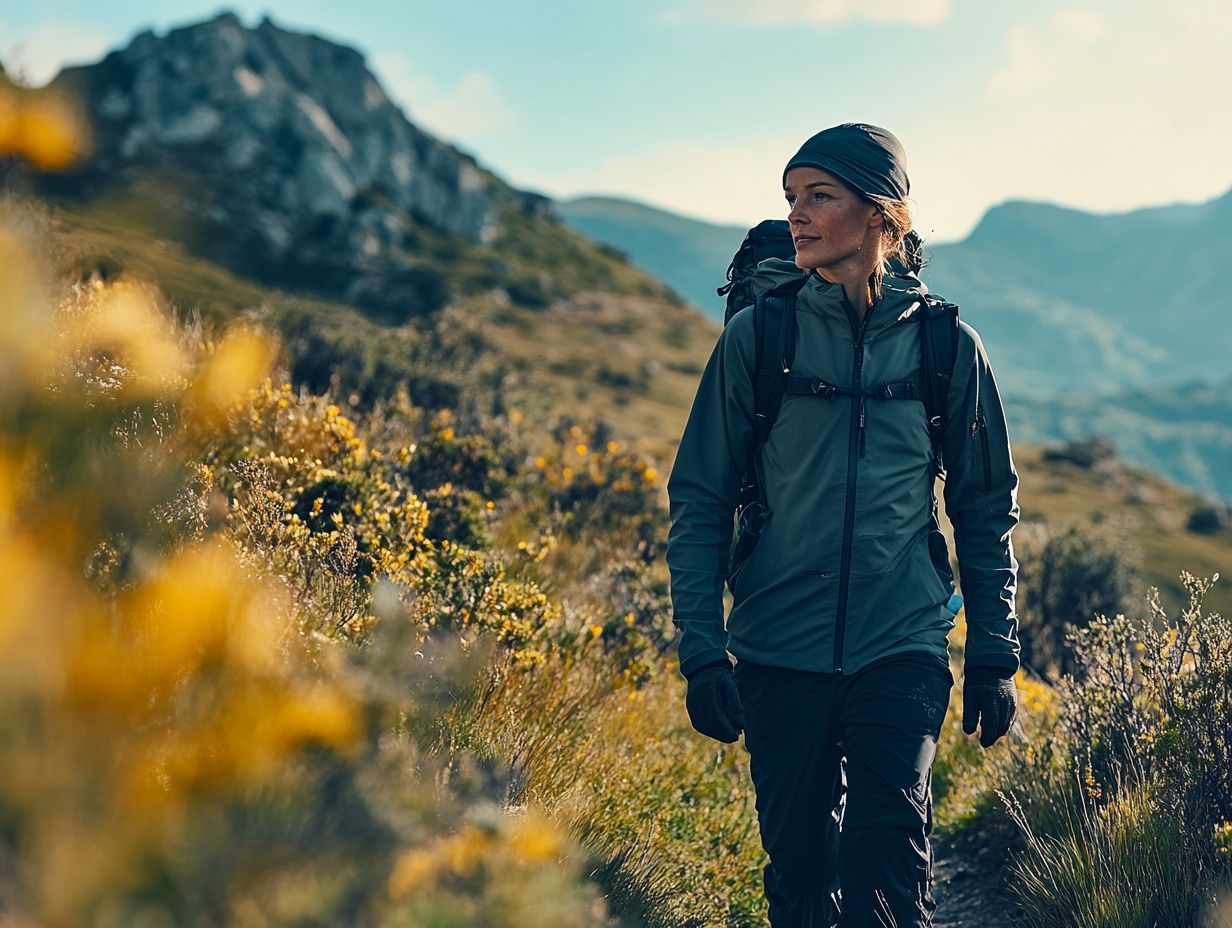
Selecting the perfect breathable fabric for your needs demands thoughtful consideration of several factors. You’ll want to reflect on the type of outdoor clothing you plan to wear and the unique requirements of your active pursuits.
Considerations for Different Activities and Environments
When selecting breathable fabrics, consider how different environments and humidity levels affect your outdoor activities. These factors will dictate the most suitable clothing choices, including any necessary waterproof membranes.
In colder climates, layering is essential for insulation. It’s also important to choose breathable materials that allow moisture to escape. For example, merino wool is an excellent option due to its natural breathability and moisture-wicking properties, keeping you warm without overheating.
Conversely, when temperatures rise, opt for lightweight fabrics like linen or moisture-wicking polyester. These materials provide ventilation and help regulate your body temperature, preventing sweat accumulation and ensuring comfort during summer hikes or beach days.
Understanding the relationship between weather conditions and fabric performance can significantly elevate your outdoor experience.
Maintaining and Caring for Breathable Fabrics
Maintaining breathable fabrics is crucial for preserving their longevity and performance, especially for outdoor gear subjected to rigorous use in various conditions.
Taking good care of your breathable fabrics keeps them reliable for all your adventures.
Tips and Techniques for Proper Care
Proper care of your breathable clothing, including mesh panels for ventilation, is essential for maintaining performance and ensuring effective moisture wicking. Following specific washing instructions is vital.
Washing breathable fabrics in cold water helps preserve their shape and functionality. Use a gentle detergent free of harsh chemicals to protect the fibers. Avoid fabric softeners, as they can create a barrier that hinders moisture management. After washing, air drying is best to prevent heat damage.
When storing your breathable items, ensure they are completely dry and kept in a well-ventilated space. This helps prevent mildew and prolongs their lifespan and performance for all your outdoor adventures.
Frequently Asked Questions
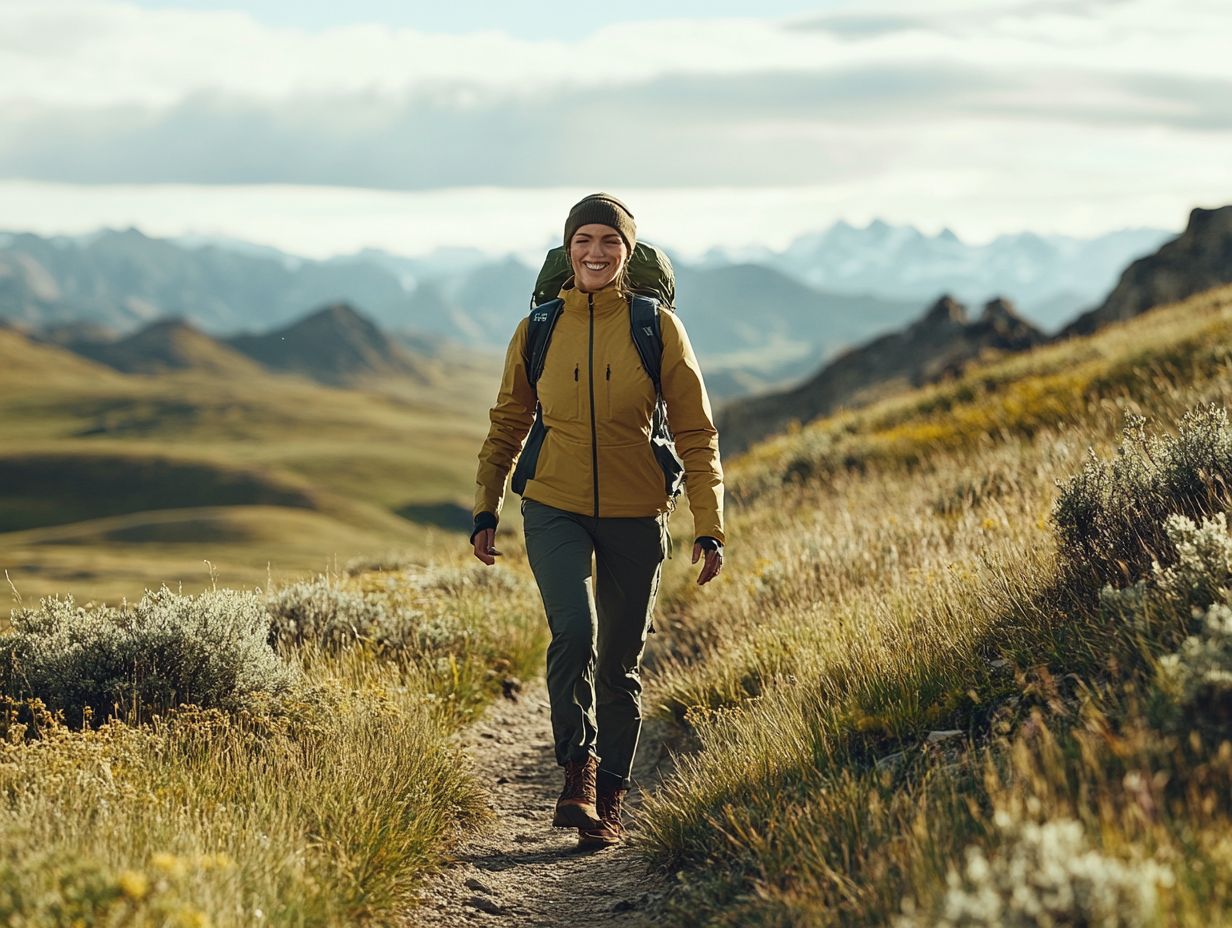
What is the role of breathable fabrics in outdoor gear?
Breathable fabrics keep you dry and comfortable by letting moisture escape during outdoor activities.
What makes breathable fabrics different from regular fabrics?
Breathable fabrics have tiny pores that allow air and moisture to pass through, while regular fabrics do not.
Why is breathability important in outdoor gear?
During outdoor activities, the body produces sweat. Without proper breathability, moisture can get trapped, causing discomfort and even hypothermia in cold weather.
What are some examples of breathable fabrics used in outdoor gear?
Popular breathable fabrics include:
- Gore-Tex
- eVent
- Polartec
These fabrics are commonly used in jackets, pants, and shoes.
Can breathable fabrics also be waterproof?
Yes, some breathable fabrics are also waterproof, making them ideal for outdoor activities in wet weather conditions.
Are there any downsides to using breathable fabrics in outdoor gear?
While breathable fabrics are essential for comfort, they may not provide enough warmth in extremely cold temperatures. It’s important to layer appropriately in these conditions.

